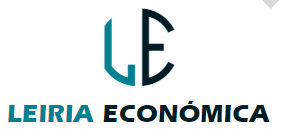Researchers at the Max Planck Institute for Nuclear Physics in Heidelberg have taken a new step in mastering quantum phenomena. They have actually succeeded in controlling the direction of motion of electrons inside a hydrogen molecule using ultrafast laser pulses. This scientific achievement, on the attosecond scale (an attosecond is a billionth of a billionth of a second), could change the future of quantum computing and information technologies.
Quantum physics in brief
Quantum physics is the branch of science that focuses on phenomena at the level of subatomic particles, such as electrons, protons, and photons. At these microscopic levels, the rules of classical physics that we know (such as those governing gravity or motion) no longer apply. Then particles exhibit strange and often counterintuitive behaviors.
The importance of quantum physics lies in its revolutionary potential. It is already the basis of modern technologies such as lasers or transistors, which form the foundations of today's computers. However, its future applications, especially in quantum computingpromising even more astonishing progress. This system would make it possible to exploit “qubits,” units of quantum information capable of existing in several states at the same time, which would make it possible to solve complex calculations in record time.
What is quantum entanglement?
One of the key concepts to understanding the experiment conducted by researchers at the Max Planck Institute is the concept of quantum entanglementIt is a phenomenon in which two particles, even if they are at a great distance, remain “connected.” This means that What happens to one immediately affects the other, regardless of the distance between them..
To simplify, imagine you have two gloves from a single pair. If you find one and see that it is the right glove, you will automatically know that the second glove is the left glove, no matter where it is. In quantum physics, entanglement works in a similar way, but it goes beyond this simple analogy. It allows for simultaneous states of particles, which are essential for quantum computers.
Max Planck Institute researchers' experience
As part of the study, researchers from the Max Planck Institute were able to: Manipulating this entanglement in Changing the direction of electron movement in a hydrogen molecule (A simple molecule consists of two protons and two electrons.) To do this, they used ultrafast laser pulses, on the order of attoseconds, to precisely control the path of the electrons. By adjusting the time between two light pulses, they were able to influence the emission of one electron while leaving the other entangled in the molecule.
The physicists’ achievement is based on controlling the asymmetry of the emission of the freed electron compared to the remaining electron bound to the molecule. This control is made possible by fine-tuning the delay between the laser pulses. The latter essentially allows for influencing the interactions between the electrons and directing their motion on an extremely short time scale, Much less than a femtosecond (one thousandth of a billionth of a second).

Why is this important?
This discovery is a major advance for several reasons. It brings us closer to The possibility of processing entangled quantum states more quickly than was possible before. Until now, researchers have worked on the nanosecond (10⁻⁹ seconds) or femtosecond (10⁻¹⁵ seconds) scale. Moving to the attosecond scale represents an astonishing acceleration, more than 100,000 times faster.
This breakthrough could have major implications for quantum computing. Indeed, one of the biggest challenges facing the technology is “decoherence,” the loss of information due to external disturbances. The faster calculations can be performed, the less susceptible qubits are to these disturbances, making calculations more stable and reliable.
In addition, this advance could make it possible to develop quantum algorithms capable of processing information on extremely short timescales. This would pave the way for a new generation of quantum computers capable of solving complex problems much faster than current classical computers.
despite this discovery Impressive as it is, we are still far from seeing a direct application in consumer quantum computers. Controlling entangled quantum states on such short time scales remains a delicate experimental feat, and the technical challenges remain numerous.
However, this advance provides valuable information for the future development of quantum technologies. By better understanding the behavior of particles on the attosecond scale, researchers continue to push the boundaries of science and engineering, bringing us one step closer to the dream of quantum computing.
